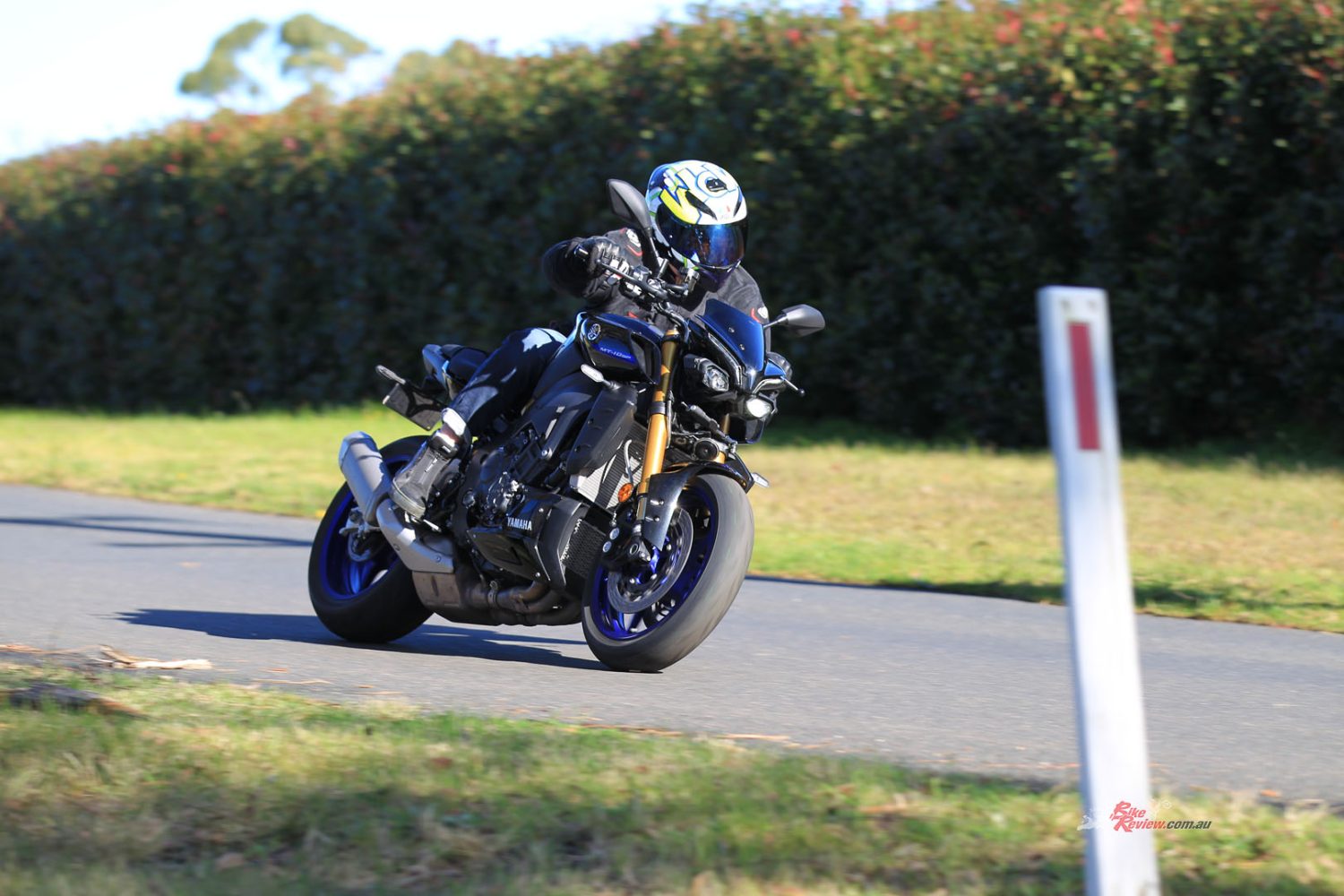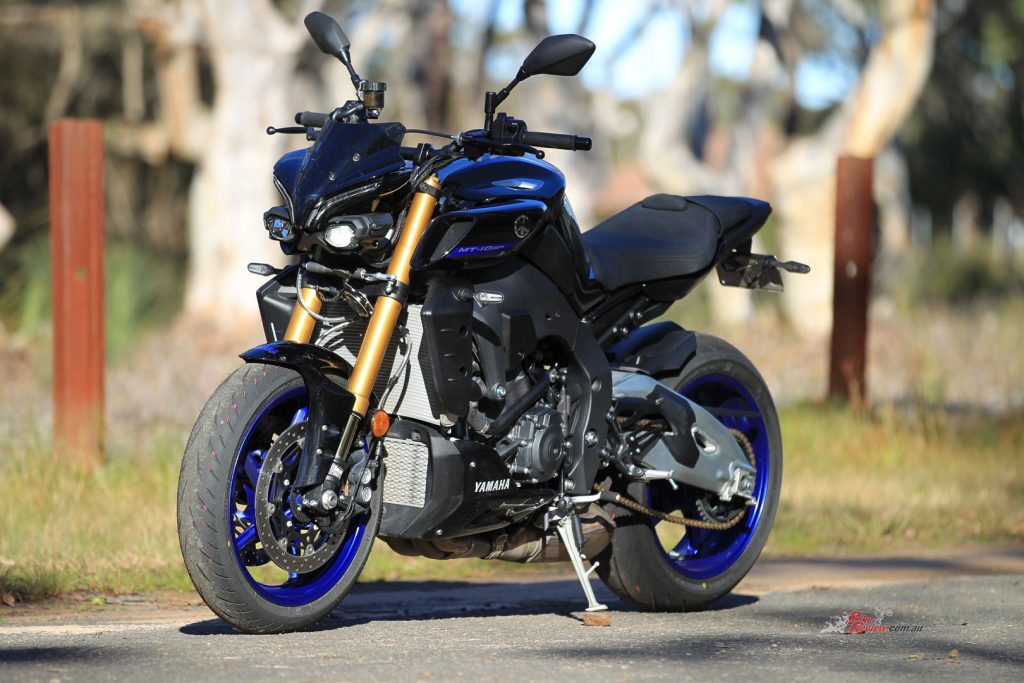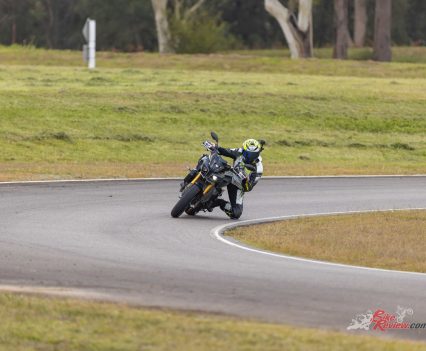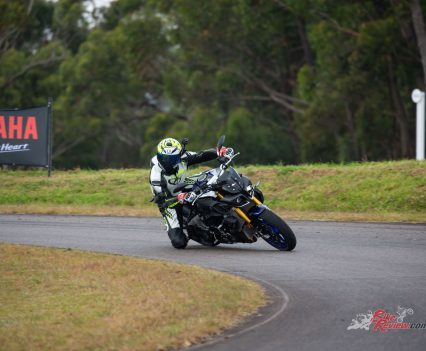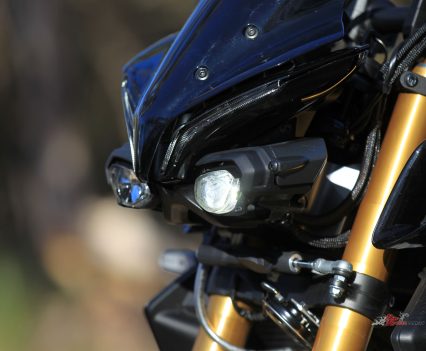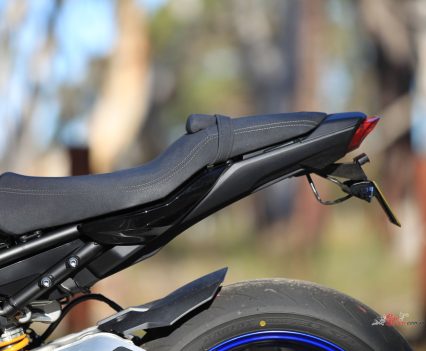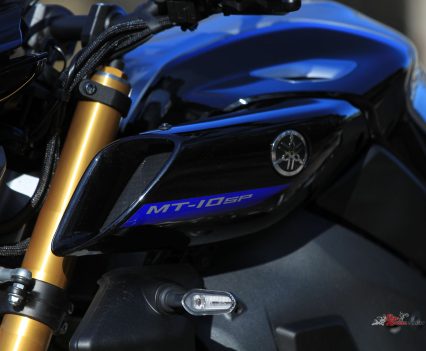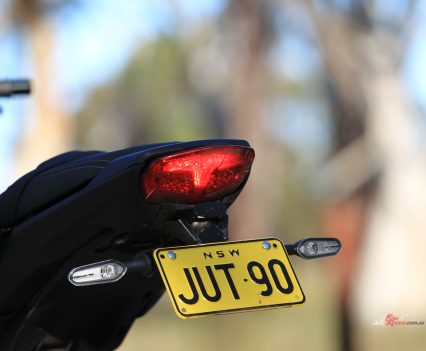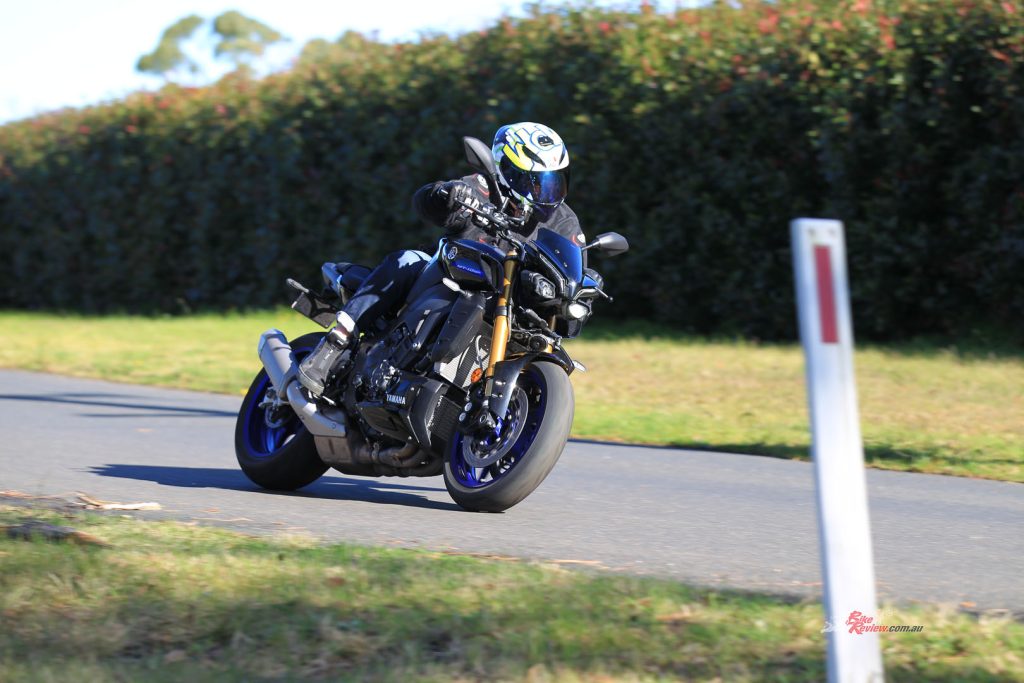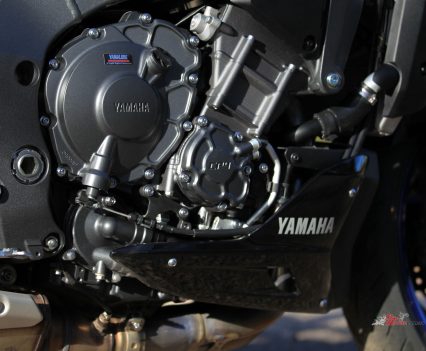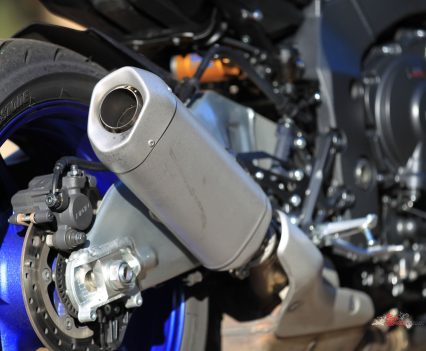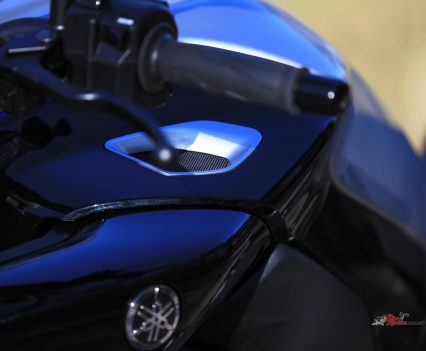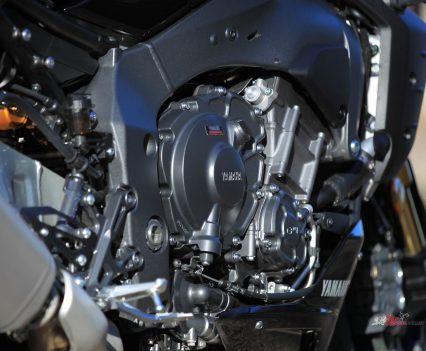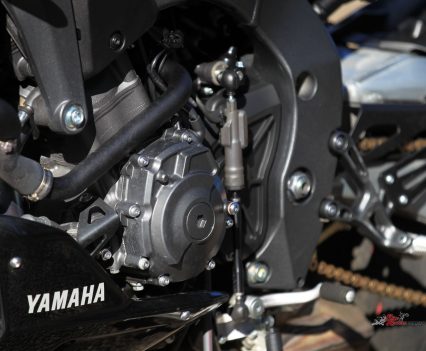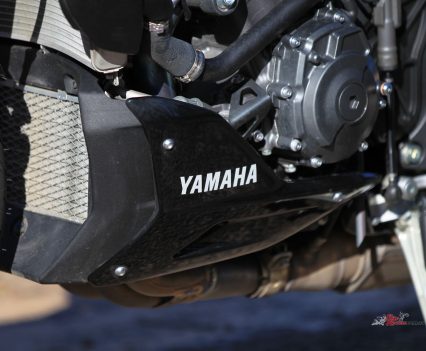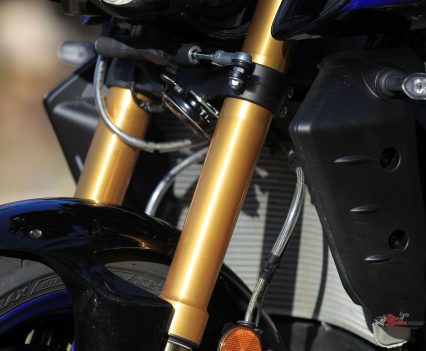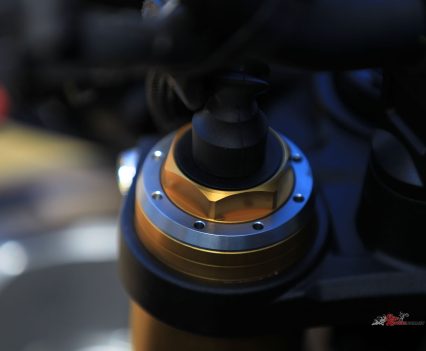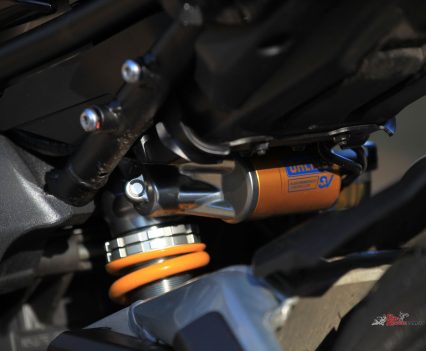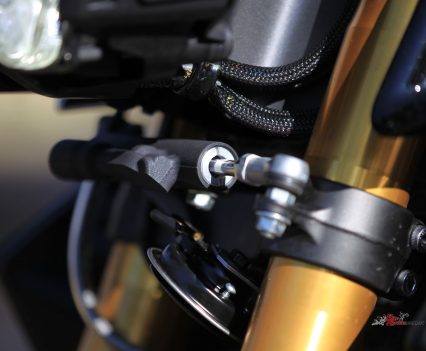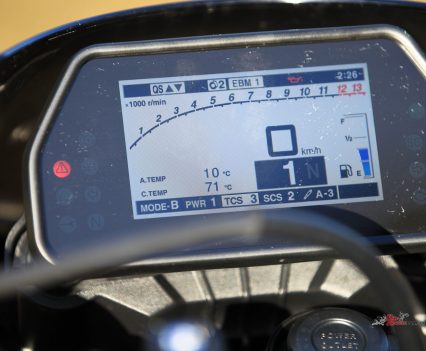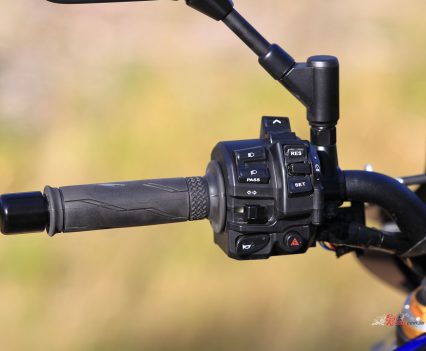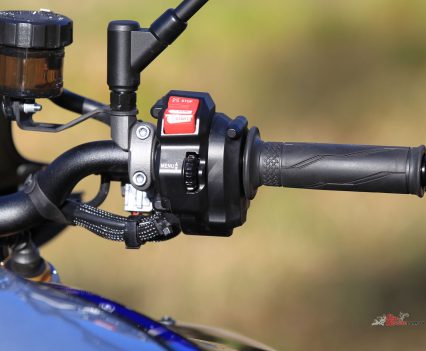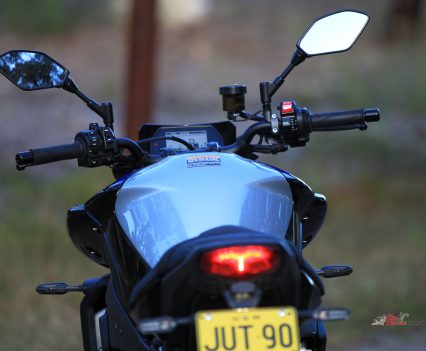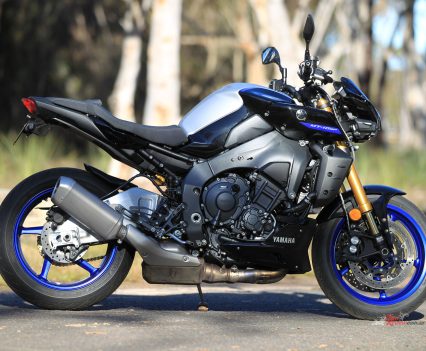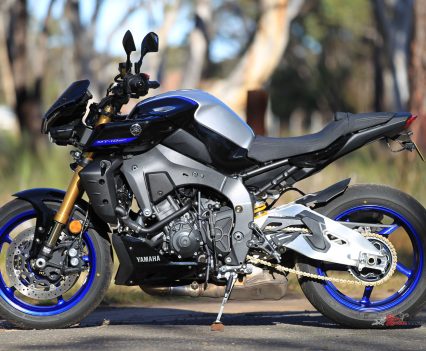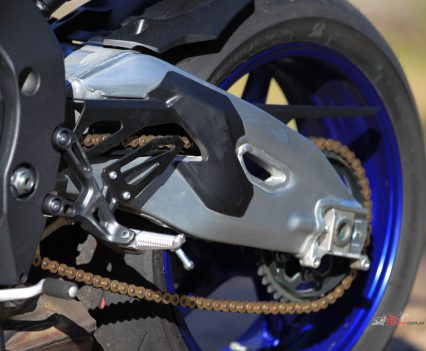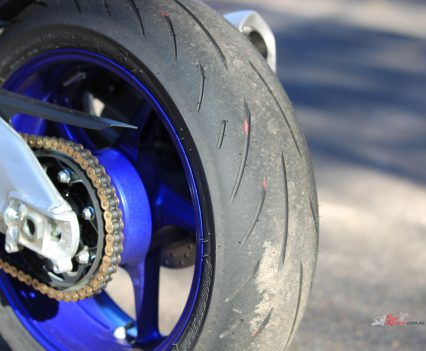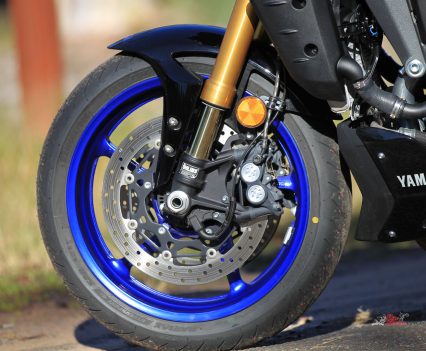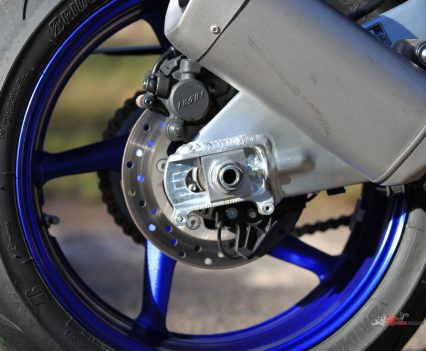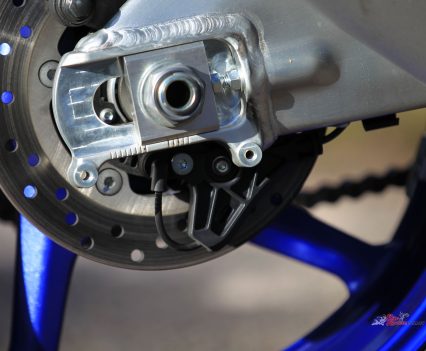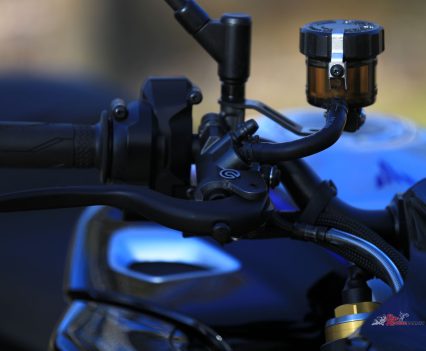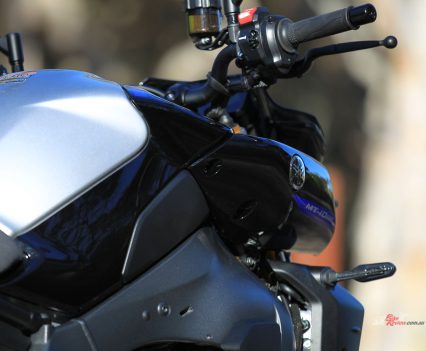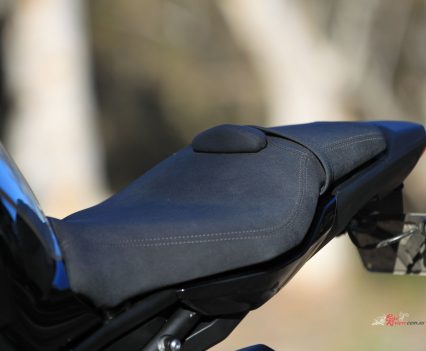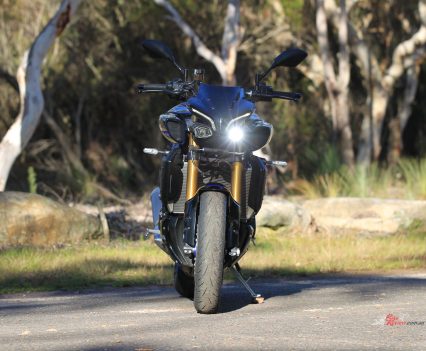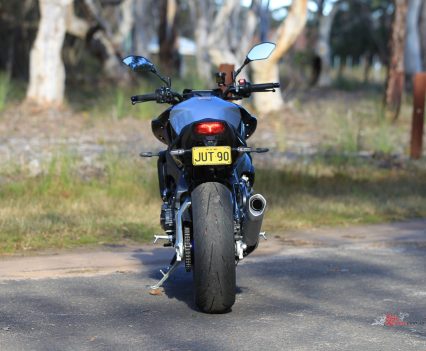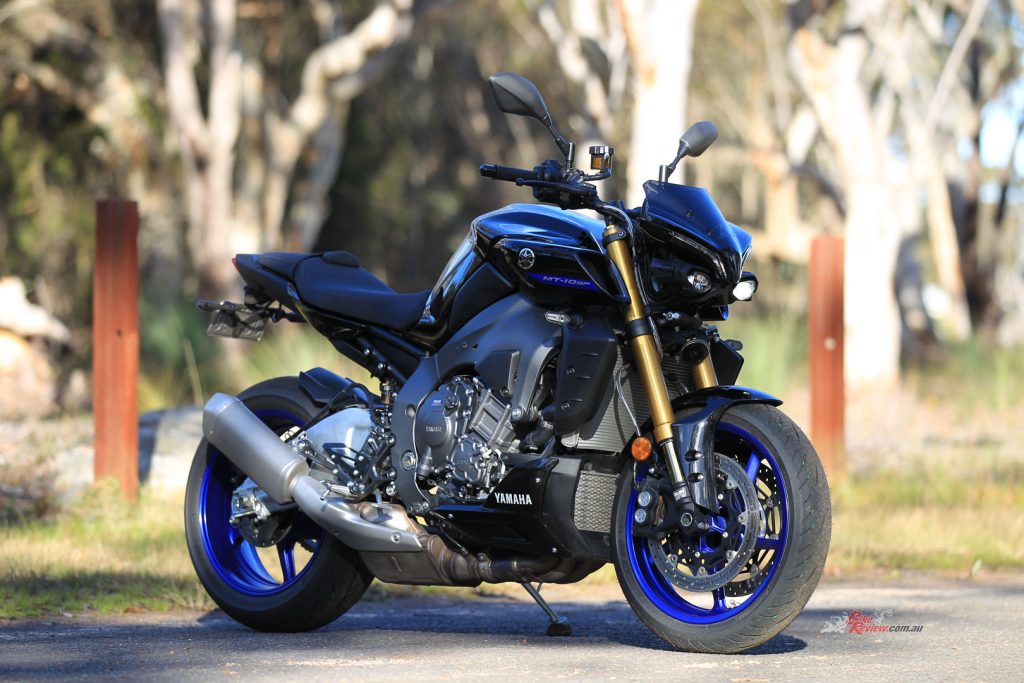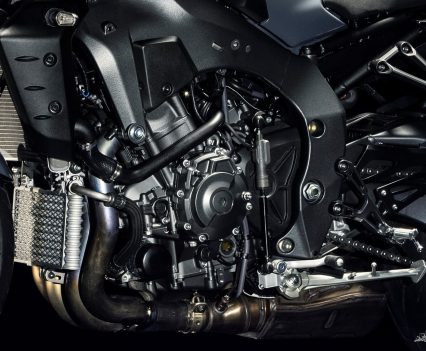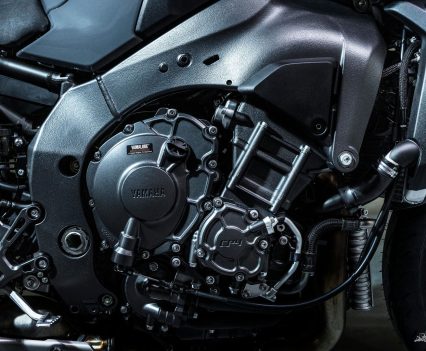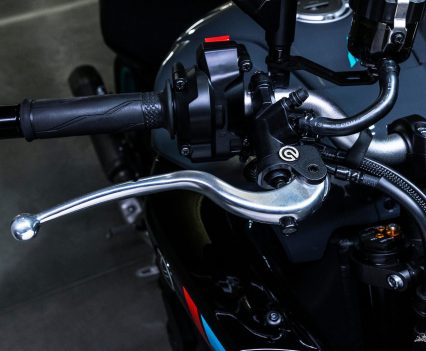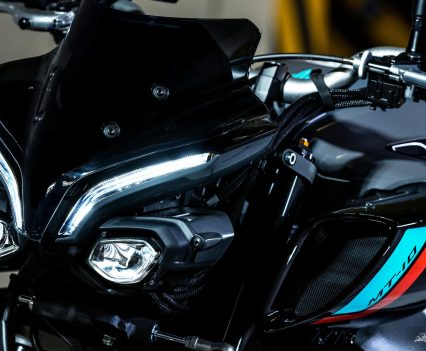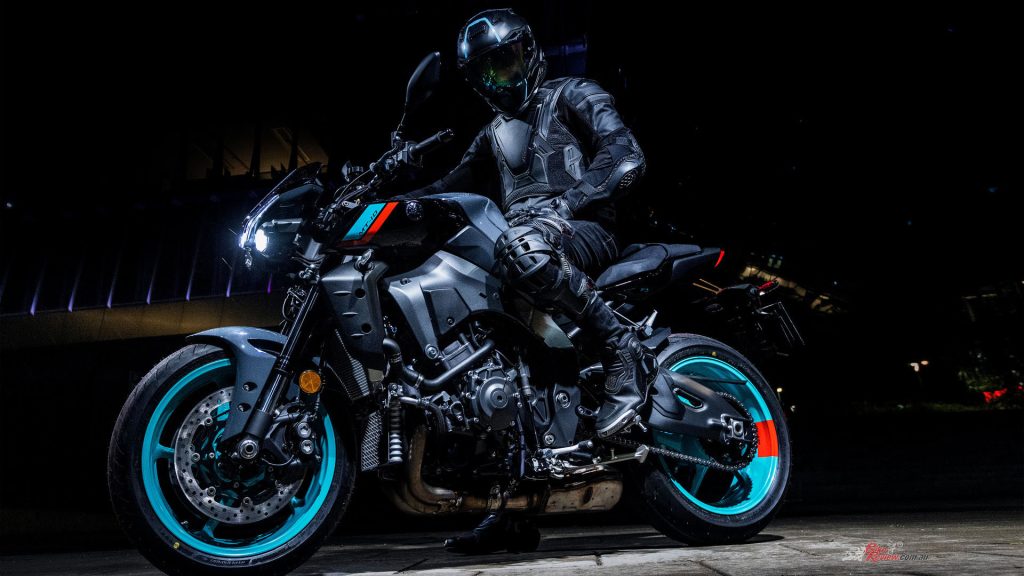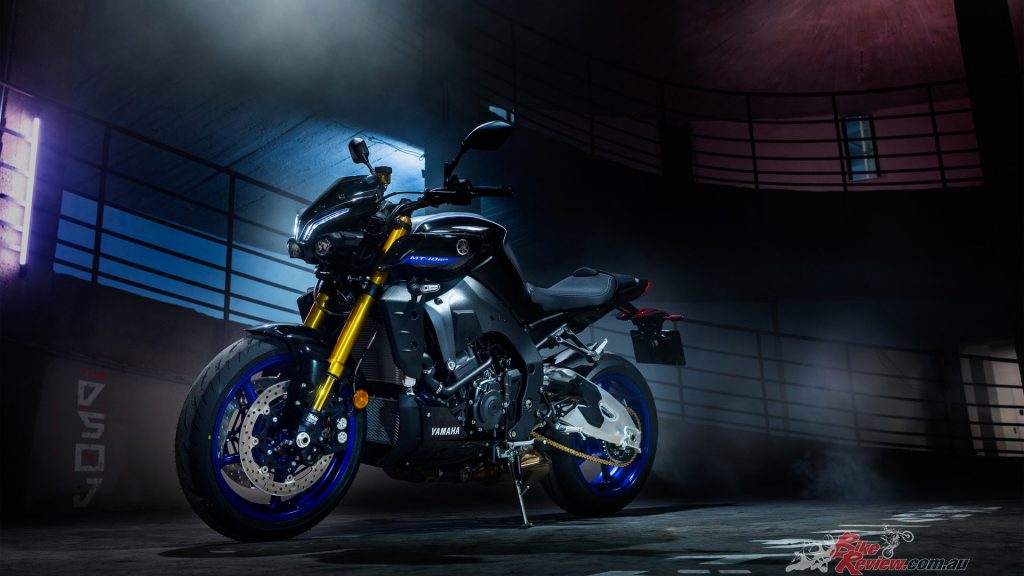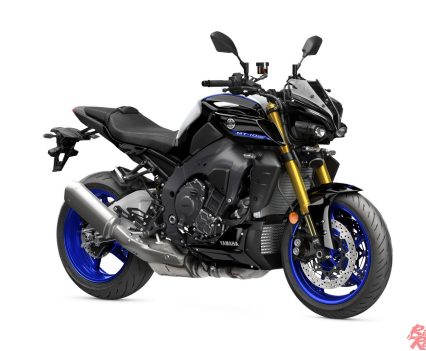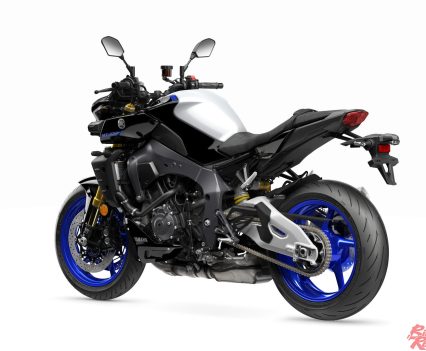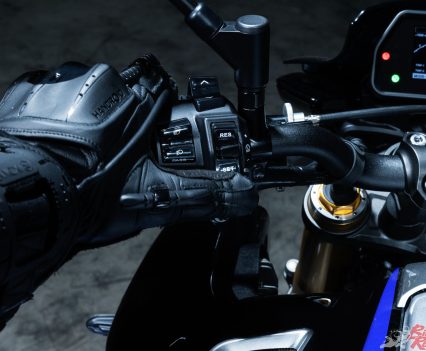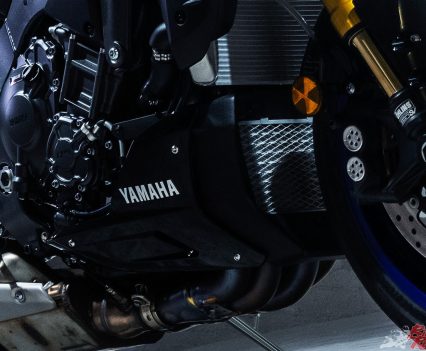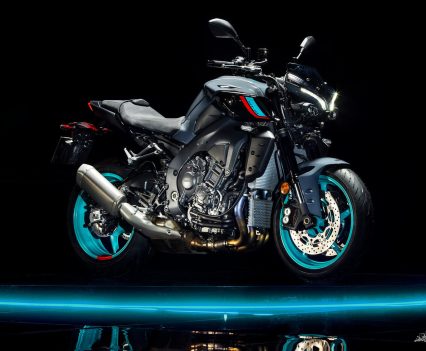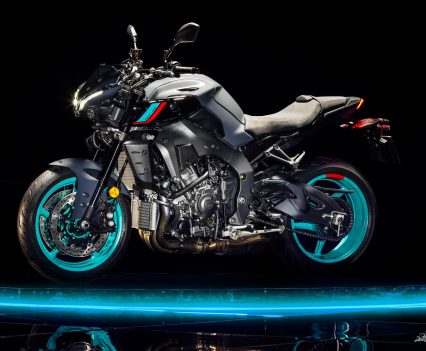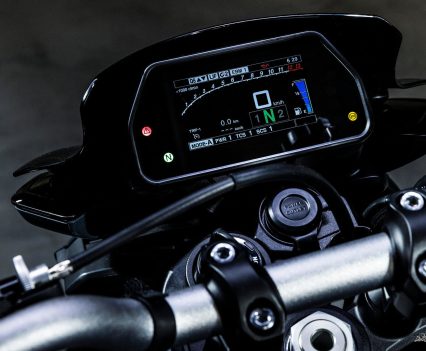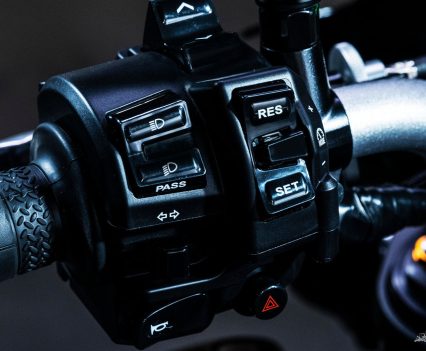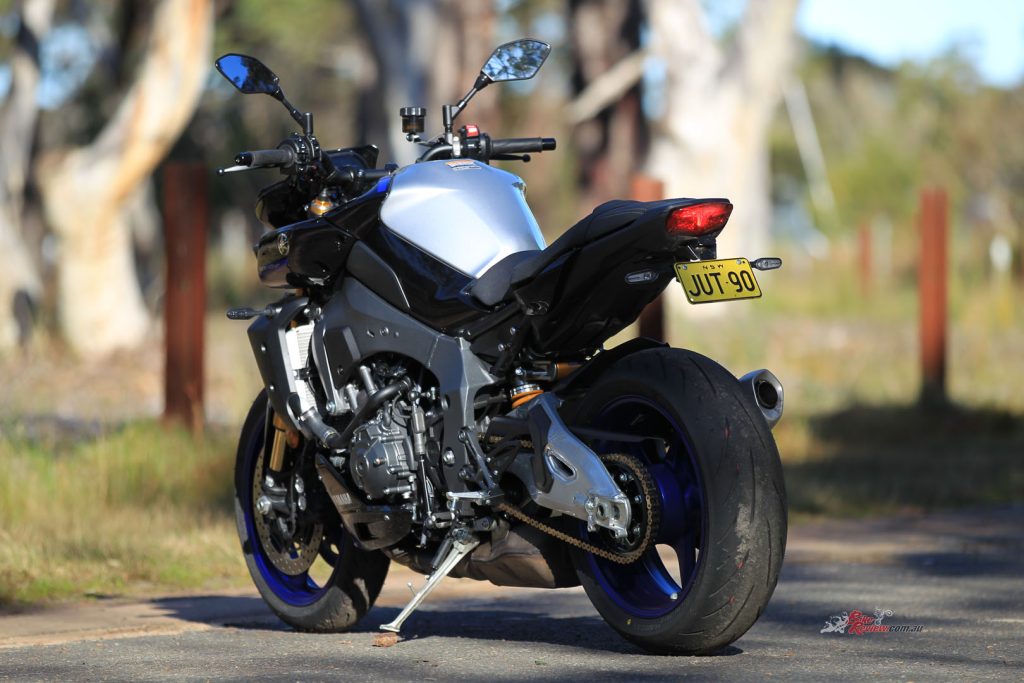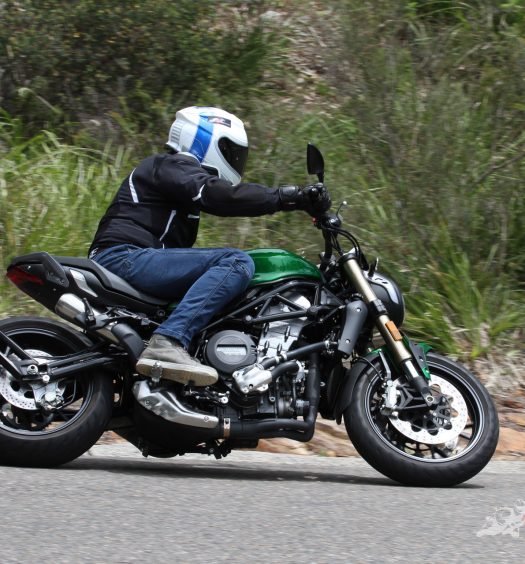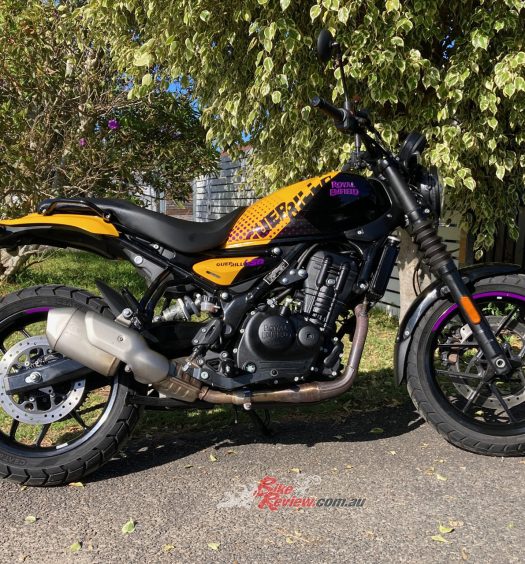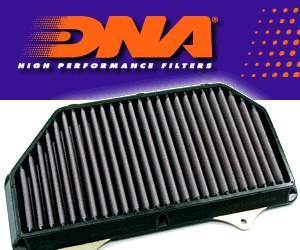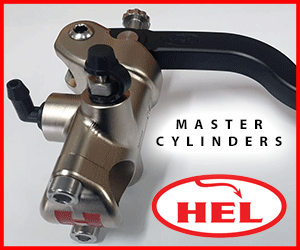The long awaited updated version of the MT-10SP has landed. Zane took one for a spin to see how the changes stood up to Australian roads... Words: Zane Dobie Photos: Impact Photography
My experience with the Yamaha MT-10 has been a long and happy road. Ever since I threw a leg over one for the first time, I knew Yamaha had made something special. I was pretty eager to get on the 2022 MT-10SP for the model’s first major update…
The MT-10 is a bit of a special machine for me, about five years ago it became the first litre bike I had ever ridden. I was only about 17 at the time and I was running a few practice laps on the R3 cup bike out at Wakefield Park when Dad, for reasons unknown to me, thought I could be trusted with his MT-10.
Read our MT range reviews here…
After throwing me the keys and saying “don’t farkin crash it” I headed out on track, as soon as I twisted the throttle I got instant goosebumps. I had never felt anything like it, my face was melting as the front wheel lifted in the air and I felt like I was going to throw up as I rattled through the quick-shifter. Grabbing the brakes for the first time and I thought for sure I was going over the bars after being used to the tiny single caliper brake on the front of the R3.
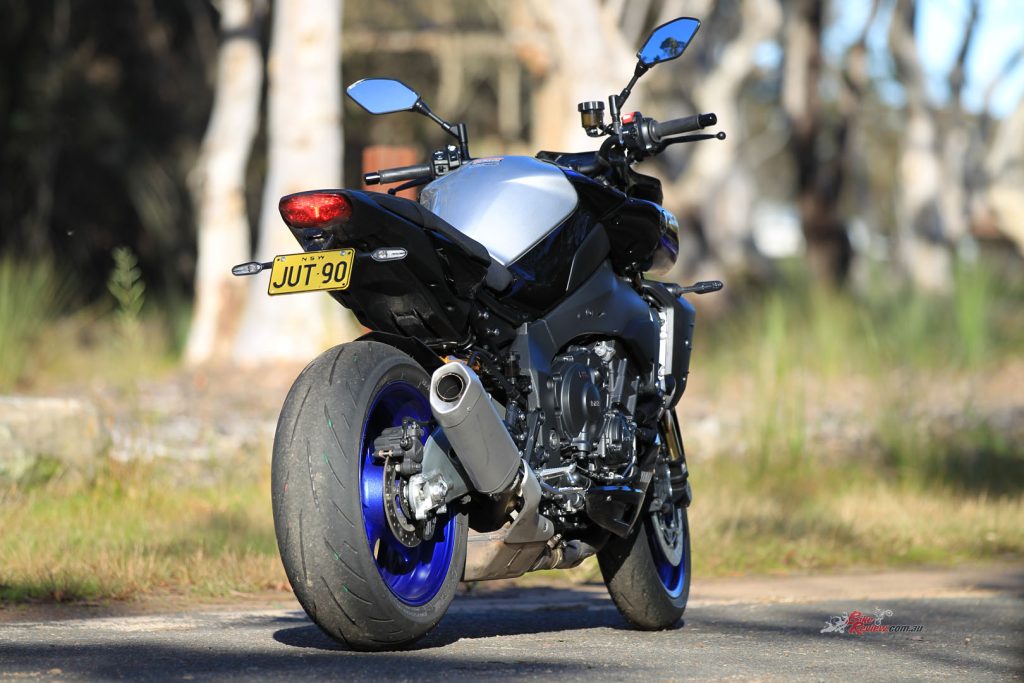
A few months after the MT-10 was released, Yamaha took it up a notch by announcing the MT-10SP with some seriously impressive suspension.
In no time I felt at home on the bike. I was leaning it over onto the absolute edge of the tyre, much further than what I was used to, to get my knee onto the ground and there was grip for days! I would have multiple other run ins with the MT-10 over the next five years starting from “borrowing” the keys to Dads one when he was at work (sorry Dad), thousands of KM’s and a special appearance from the MT-10 at a track day out at The Farm for the MT-09 launch which cemented my love for the bike. Now I’ve ridden a fair few litre bikes and I can say that the MT-10SP sits pretty damn high in my list of favourites.
When 2022 rolled around, I was eager to see what Yamaha had done to improve the, in my eyes, already perfect bike. This year they have stolen the six-axis IMU and TFT off the YZF-R1 and most recently seen on the MT-09. What a bike they have created…
First off, I like the way the MT-10SP looks. Sure, it’s not a work of art like some classic bikes but come on, it looks bloody cranky! The tiny ant-like head that houses the headlights and windshield is perfectly framed behind those huge ducts that suck down air better than the vacuum at my local car-wash. Don’t even get me started on that lower fairing they’ve added this year too, it shapes the fat machine superbly, I just wish they painted it a different colour. The rest of the bike is minimalist, allowing the Öhlins suspension and the 998cc powerhouse play the leading role.
I managed to test the MT-10SP smack bang in the middle of flood season. Heading out for the photo shoot was a massive pain as I couldn’t seem to find a single dry/non-pot-holed corner within an hour radius of my house! Luckily I had one weekend where I could enjoy the MT-10SP through the twisties, of course it was double demerits though… No stress, the 2022 model has a cruise control and a speed limiter, meaning I could set my top speed and not have my licence taken away…
The engine is of course a huge highlight of the bike, for 2022 it has undergone a fair few internal upgrades, see the tech break below for the full list which mainly add to the reliability, but the most noticeable change has to be the change in torque application between 4000 and 8000rpm. Instead of a huge rush of torque felt in the previous model, the 2022 seems to be a bit more tame and forgiving of lead-wristed riders.
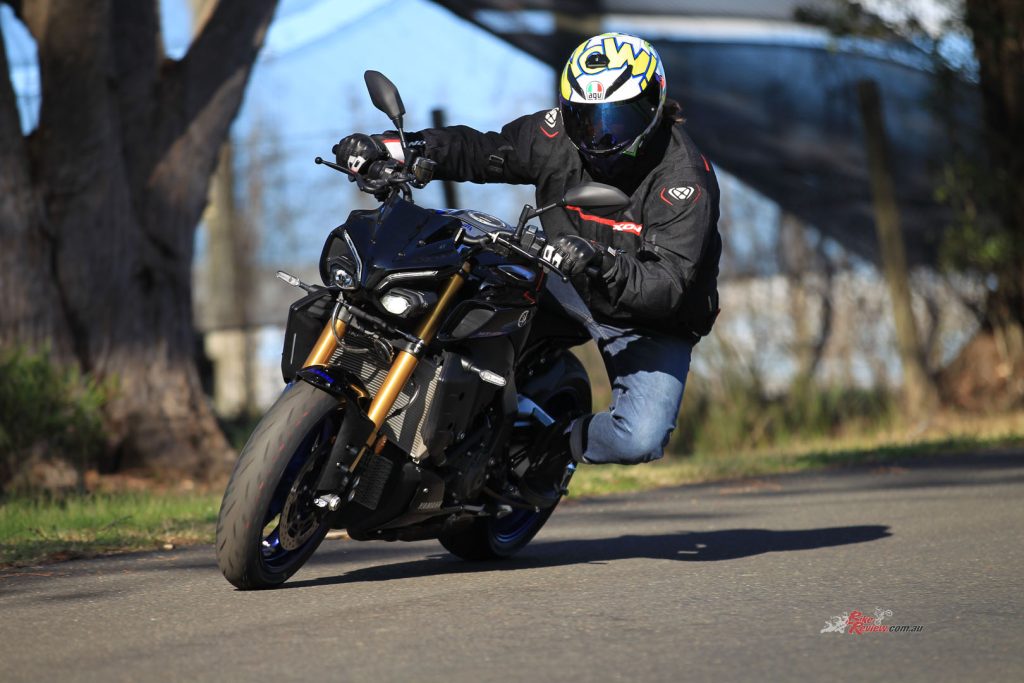
“It’s pretty hard to imagine that Yamaha have actually detuned the YZF-R1 engine as there’s still enough grunt to make you hang on for dear life.”
It’s pretty hard to imagine that Yamaha have actually detuned the YZF-R1 engine as there’s still enough grunt to make you hang on for dear life. After I spent some time with the YZF-R1M and jumped back on the MT-10, the only real difference in power I notice on the road was how the MT-10 applied it, making the bike all-round easier to handle daily duties, especially when in the lower power mode but both modes allowed for manageable amounts of low-down power so we just kept it in the high power mode.
Something that is not daily-manageable is just how thirsty this bike is for such a small tank. I was really surprised to see that Yamaha stuck with the 17 litre tank, around the 300km range means that those with a long commute to work will be filling it up each morning riding to and from work. I always laugh when I think about both MT-10s running out of fuel at the MT-09 launch during the road test…
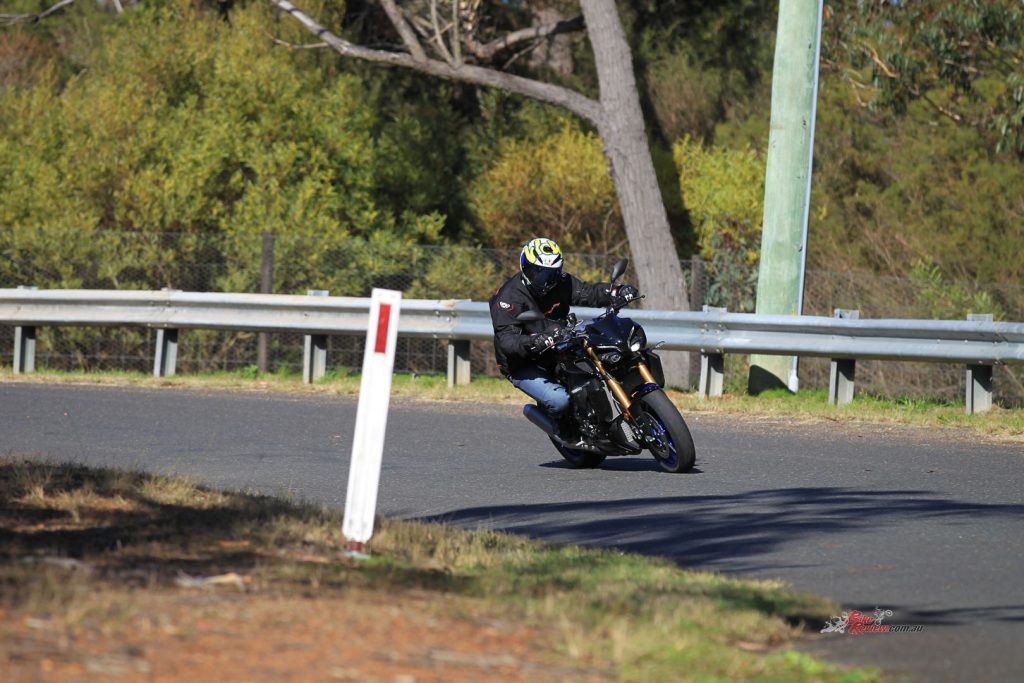
The MT-10 is manageable at low speeds but twist the throttle on all the way and you’ll witness the speed rise at an alarming rate….
I think the craziest part was watching the numbers on the dash go up at such a fast rate, it was almost scary! The up and down quick shifter is now a standard feature on the base MT-10 model. What an awesome system, rattling through the gears feels like a Gatling gun, the engine lets off a little pop as you grab each gear to unleash the dizzying speeds.
Downshifts are spectacular too, as was the case on the MT-09, stamp down one too many gears and the rear wheel won’t lock up. This was thanks to the slipper and assist clutch seen on most of the Yamaha range now. Funnily enough, I had the same issue I had while riding the Tracer 900, the MT-10 required more revs than other bikes to get it off the line, I believe it was just under 4000rpm. This will become second nature when if it’s your only machine, but riding multiple different bikes a month, I found myself stalling it a few times…
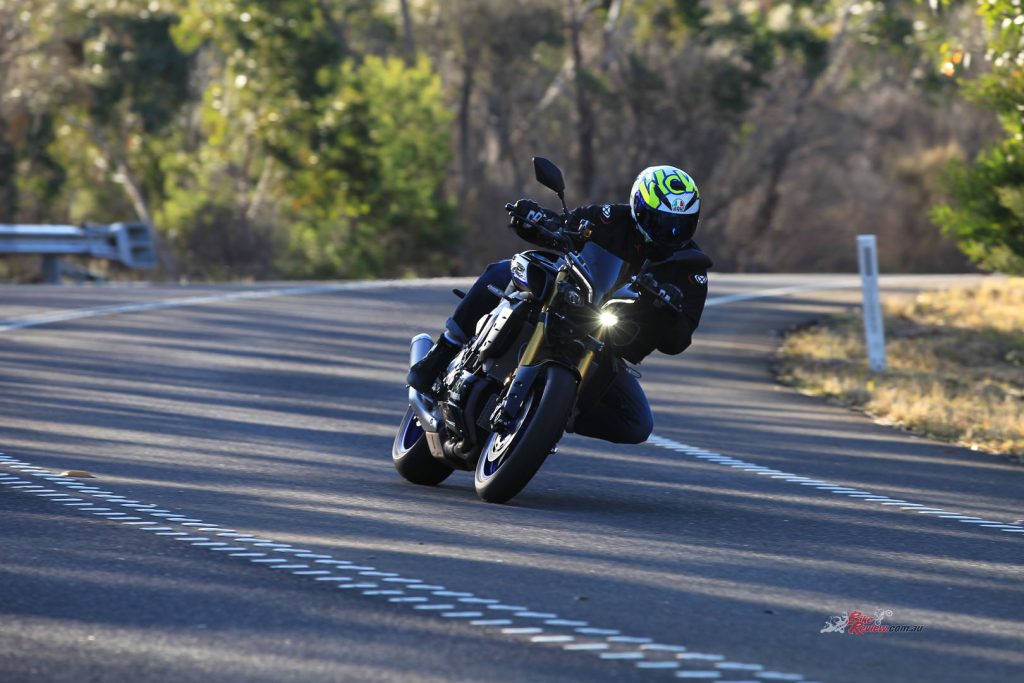
“Also new for 2022 is a revised Öhlins active suspension with full electronic adjustment. There’s no other word to describe it other than glorious.”
Also new for 2022 is a revised Öhlins active suspension with full electronic adjustment. There’s no other word to describe it other than glorious. Yamaha really struggle with their rear suspension setup, especially the rebound. But thanks to the roads not holding up to the recent severe downpours, I put it to the ultimate test.
For most of my time on the MT-10SP I had the suspension set to the softer pre-set (A-2). In this pre-set, potholes were absolutely no worries, considering other bikes have managed to rattle my skull through my spine when hitting them. Switching to A-1 and there is a noticeable difference in the overall feeling at the front and rear, the whole bike stiffens up. I didn’t actually spend too much time in this mode as I feel like you’re sacrificing a fair bit of comfort when commuting but it was as easy as clicking through the setting and changing it to A-1.
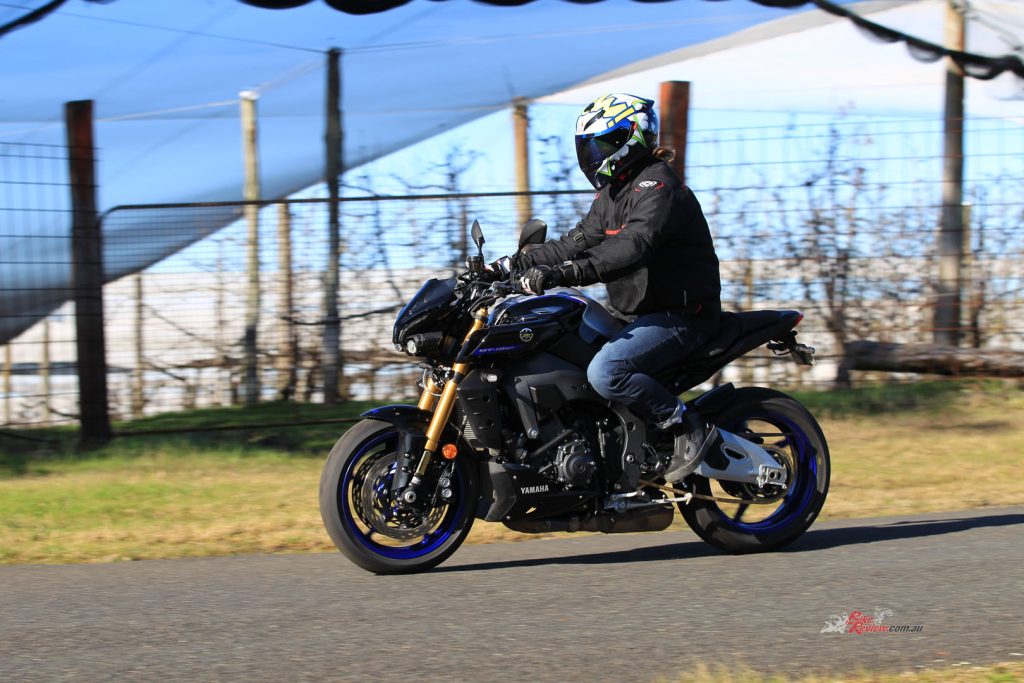
Plenty of suspension options on the MT-10SP to ensure you find the balance between comfort and lightning fast suspension response.
There are also three manual profiles that allow you to set up the suspension to your liking. I had a quick flick through each profile, just to see what I could change but ultimately when back to the present profiles. When it comes time to track test the MT-10SP, I’ll for sure be tinkering with the settings as changes are much more noticeable at high speed. But, for the road, I’m sure Yamaha and Öhlins know how to set it up better than some bloke in his early 20s, so I just stuck to what they supplied for the most part.
Speaking of setup profiles, there are so many options on the dash, you’ll have to spend hours going through them all and setting up something that works for you. I wasn’t a fan of the actual of the interface, the controls were overly complicated and hard to understand. Sure, you’ll learn them all over time but you can’t jump on the bike and instantly know how to change the settings. I first thought “there’s no way they could fit all those settings into an easily usable interface” then I remembered that Triumph have been making excellent and easy to use interfaces for years now, it might be time for Yamaha to step it up.
Everything else on the 4.2in TFT is excellent, all the info is clearly displayed and you could easily see what was and wasn’t activated in terms of the new excellent six-axis IMU assist system borrowed from the YZF-R1. Where to begin with this? It’s hard to find anything bad to say about how the assist system performs, impossible in fact. I was expecting a lot of the suite to be unnoticeable on the road but I was proven wrong!
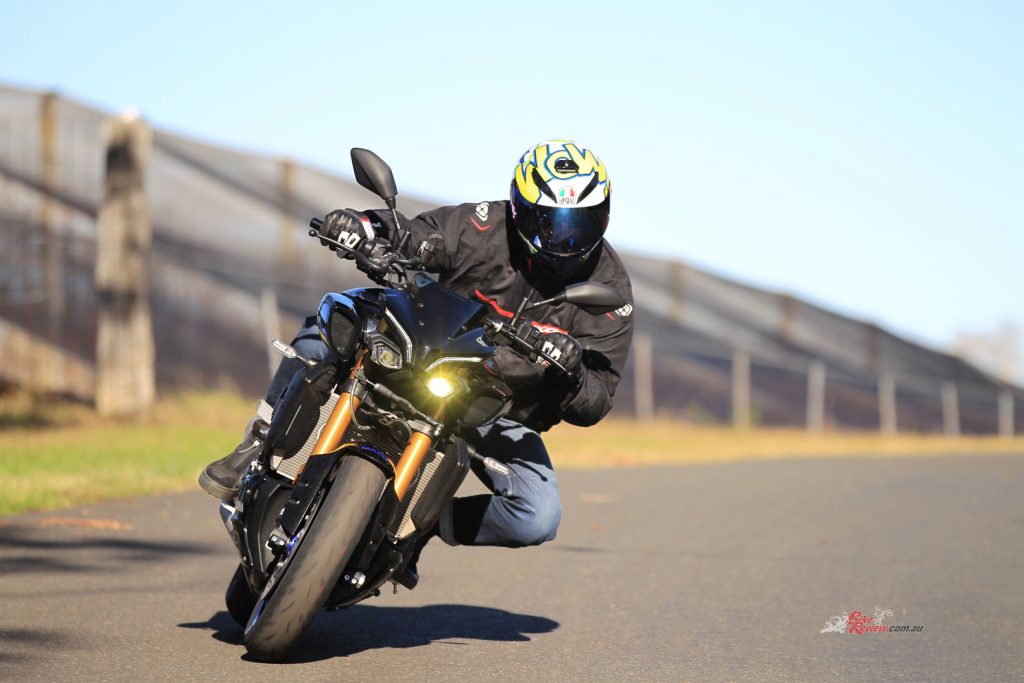
The six-axis IMU opens a whole new world for the MT-10SP, allowing for more accurate and less noticeable intervention from the assist system.
I always laugh when I read comments online about how people turn off all the assists on the road because they’re such an “excellent rider”, there’s absolutely no reason to with the Yamaha six-axis system. It’s so intelligent you won’t even notice it’s there until you need it. I had all of the assists set to medium intervention and you won’t notice them working but they’ll be there to save your ass..
“I always laugh when I read comments online about how people turn off all the assists on the road because they’re such an ‘excellent rider’, there’s absolutely no reason to with the Yamaha six-axis system.”
The only noticeable intervention from the assist system is the LIF and TCS. For starters the TCS saved me twice from giving the MT-10 too many beans off the lights and the wet road proved too much for the Bridgestone S22 hoops, cutting power before I ended up on my ass. LIF is the same, the previous MT-10s I’ve ridden really struggled to keep the front wheel on the ground. The LIF allowed me to twist the throttle on completely without doing a backflip, considering wheelies aren’t my forte, I kept it on for the whole test.
The frame itself remains unchanged from the last model besides the longer brushed aluminium swingarm which looks awesome. Despite the longer swingarm, the wheelbase has only been increased by 5mm meaning the MT-10 still has a relatively short wheelbase, which makes the steering nice and snappy. It really shined through the tighter sections of my local twisites, falling side to side with ease and I didn’t feel myself needing to muscle it through the corners.
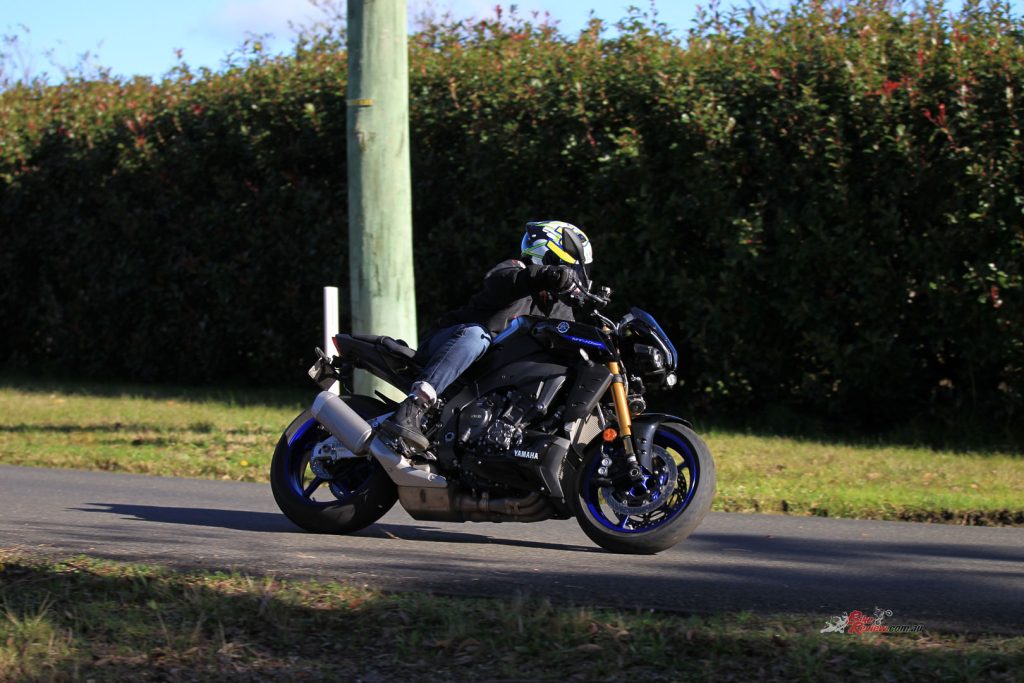
Despite the longer swingarm, the wheelbase has only been increased by 5mm meaning the MT-10 still has a relatively short wheelbase, which makes the steering nice and snappy.
If I wasn’t feeling queasy from the acceleration, it was the brakes. A had these things working OT during the photo shoot, we only managed to find a relatively short stretch of road that was actually usable, so speeding up for the corner and then slamming the brakes on straight after about 20 times. No lock-ups, no chatter and a very short stopping distance, all ticks on my list! The brake control assist was another positive, although it’ll come into use more on the track it’s nice to have control over how the ABS handles mid corner braking.
While the Öhlins suspension allowed for a silky smooth ride, Yamaha seem to make all their seats out concrete or something similar. After a few hours on the bike my arse seriously started to go numb, the same issue on every Yamaha sports bike I’ve ridden in the past four years. Other than that, the rider triangle was actually quite nice, you sit up pretty high so you have plenty of high speed manoeuvrability. Nice wide bars and knee pockets on the side of the tank allow for low speed manoeuvrability too…
In terms of grip, the Bridgestone S22 do an awesome job of handling daily riding with the occasional trip through the twisties on the weekend. The grip levels on the edge of these is high and continues to impress across the Yamaha range. But the MT-10 uses a common wheel size that won’t be hard to find something more aggressive.
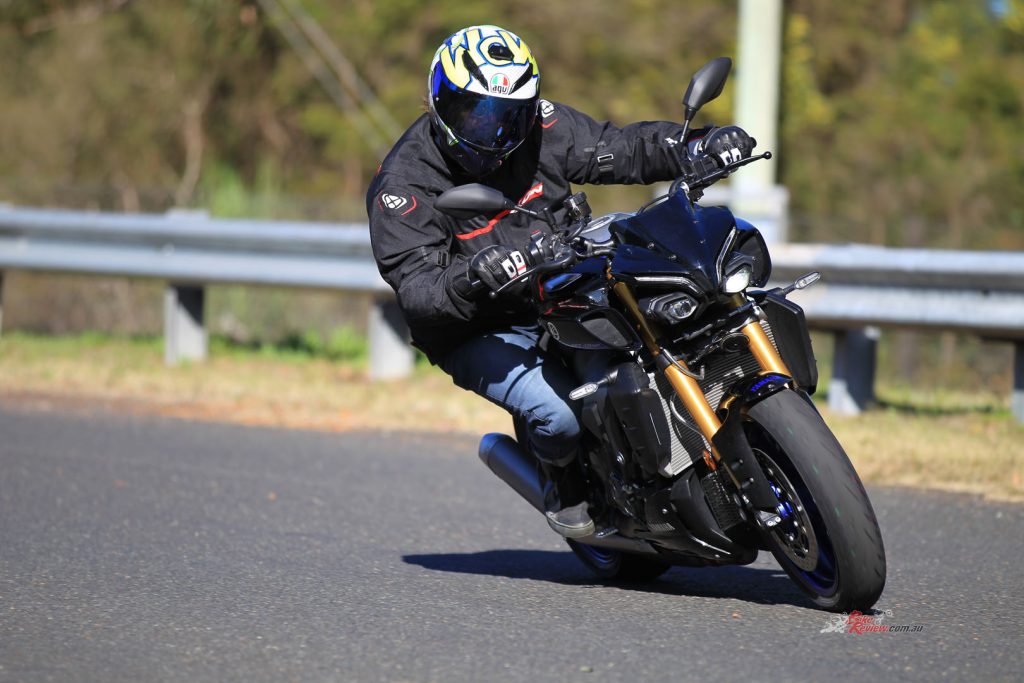
“In terms of grip, the Bridgestone S22 do an awesome job of handling daily riding with the occasional trip through the twisties on the weekend.”
Here is about where I usually start to question if a bike is worth its price tag. The 2022 MT-10SP comes in at $27,349 rideaway, sitting under the Aprilia Tuono V4 Factory, Triumph Street Triple RS (no electronic suspension adjustment), KTM 1290 Super Duke R EVO and the Ducati Streetfighter V4 SP. I can’t see anything that’s better value for money than the MT-10SP right now.
“I can’t see myself opting for the cheaper standard model. The SP just does everything better and that suspension is spectacular.”
I thoroughly enjoyed my time with the 2022 Yamaha MT-10SP, its rideability, electronics, sound, suspension and customizability all come together to make something seriously special. After spending plenty of time with both the SP and the standard model, I can’t see myself opting for the cheaper standard model. The SP just does everything better and that suspension is spectacular.
I was so close to giving this bike a 10/10 but there’s still a few things I’d really like to see changed on the next model. With that being said, I’m really looking forward to seeing what happens when we take it out on the track in the near future but the road test has given me glimpses of something spectacular…
Tech Talk
The new MT-10 is equipped with a refined version of the legendary liquid-cooled CP4 crossplane engine with increased power and producing a stronger feeling of torque. The updated 2022 design benefits from lightweight aluminium forged pistons, offset conrods and direct-plated cylinders in order to ensure maximum efficiency.
To boost the road-focused midrange, steel conrods are used rather than the titanium components used on the R1, and the moment of inertia at the crankshaft is increased. Fuel maps have been changed for an even higher level of linear torque between 4000 and 8000rpm – and the design of the intake and exhaust systems has also been modified to essentially make the MT-10 sound better. Fuel economy has been improved but still isn’t great, the CO2 levels have been reduced, and the more powerful engine meets EU5 regulations.
Yamaha’s development team has custom-made a new tuned intake sound for the 2022 model by the use of an all-new air cleaner box that is equipped with three intake ducts with different lengths and cross sections. Each duct produces a different intake sound, and they are designed to resonate harmoniously at varying engine speeds.
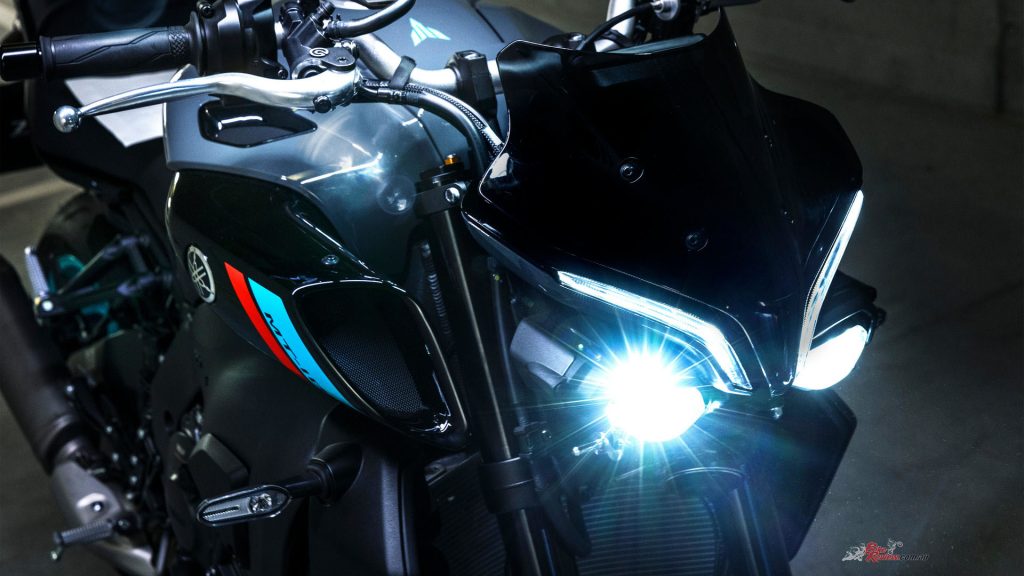
The airducts on the side aren’t just there for show, they add even more of that wonderful induction noise…
A new titanium exhaust features newly designed titanium downpipes and muffler. Like the new tuned intake, the exhaust has been designed to emit a deep and distinctive sound that emphasises the bike’s uneven firing sequence, it really does sound quite good for a stock exhaust.
A key feature on the new MT-10 is the Yamaha Variable Speed Limiter (YVSL) that gives the rider the ability to set a top speed limit to suit various situations. This ensures that public road speed limits are not accidentally exceeded. Previously available as an optional extra, the Quick Shift System (QSS) is now fitted as original equipment on the 2022 MT-10. By enabling smooth, clutchless shifting, this system makes full-on acceleration even more exciting – downshifting is also smoother and faster.
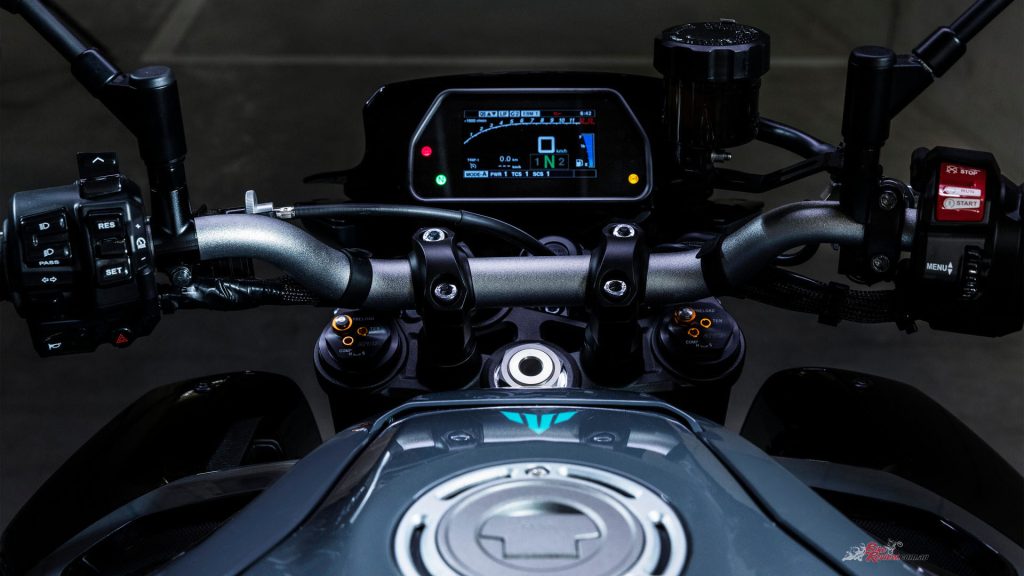
“The next evolution of the MT-10 comes fully equipped with an R1 derived 4.2in full-colour TFT display that features a clear and easy to read screen with all the key information on view.”
The new MT-10 comes fully equipped with an R1 derived 4.2in full-colour TFT display that features a clear and easy to read screen with all the key information on view. A menu switch on the right handlebar enables the rider to select which information is displayed, while the ‘Mode/Select’ switch on the left side of the handlebar can be used to change the intervention levels of the electronic rider aids, or where applicable, to turn them on or off.
A new Accelerator Position Sensor Grip (APSG) RbW twistgrip unit works with the Yamaha Chip Controlled Throttle (YCC-T) to give the MT-10 rider increased controllability when accelerating. This advanced system provides the optimum intake air volume to the engine. You can also adjust the throttle response characteristics using the PWR (Power delivery mode) switch. PWR-1 is suited to aggressive trackday riding; PWR-2 and PWR-3 deliver a smoother throttle response that enable the rider to experience the bike’s linear torque, and PWR-4 is a softer response that is best used when surface conditions are wet or slippery.
The new 6-axis IMU (Inertial Measurement Unit) has now evolved into a smaller and lighter unit. The IMU features two sensors that measure 3-axis angular velocity: pitch, roll and yaw – and three-axis acceleration: forward/backward, up/ down and left/right. This data is transmitted to the ECU which activates the bike’s electronic rider aids. Sensors detect the relative speeds of the front and rear wheels on the lean sensitive TCS, and when rear wheel traction loss is detected the ECU momentarily cuts drive to maintain traction and stability. Using data from the 6-axis IMU, this new lean sensitive traction control system is able to adjust the degree of intervention to correspond with the bike’s lean angle, with intervention increasing as lean angle increases. Five intervention levels are available.
The MT-10 is equipped with the latest Slide Control System (SCS). When the sensors predict that the rear wheel is about to slide sideways, the ECU intervenes and reduces drive to the rear wheel until the chassis is stable. The system uses pre-set intervention levels, but the rider can adjust the levels or turn the system off. LIFT control system (LIF) is when sensor data tells the IMU that front wheel lift is imminent the ECU cuts power to the rear wheel until the machine is stable again. The intervention levels are pre-set, but the rider can adjust them or turn them off.
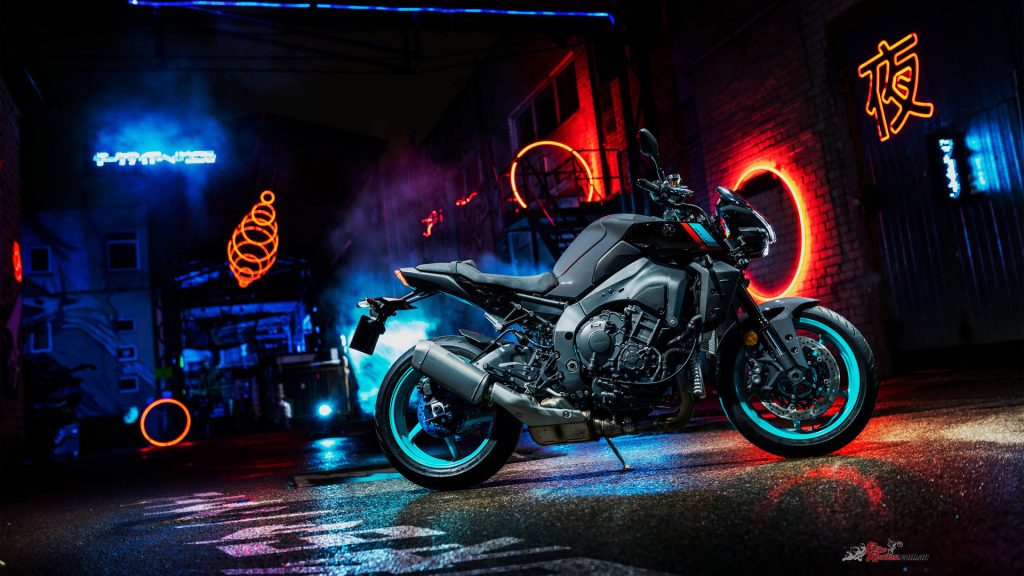
“Yamaha Ride Control (YRC) gives the MT-10 owner the ability to create an all-inclusive system that can switch the settings for the traction control, SCS, QSS, LIF, EBM and BC systems all at once.”
Brake Control (BC) is designed to give increased controllability during mid corner riding, and independently modulates and controls the pressure being applied to the front brake and rear brake. The rider can select one of two modes: BC1 mode is a standard ABS-active mode, while BC2 is designed to operate in mid corner emergency braking situations. While all of the electronic rider aids can be adjusted independently, Yamaha Ride Control (YRC) gives the MT-10 owner the ability to create an all-inclusive system that can switch the settings for the traction control, SCS, QSS, LIF, EBM and BC systems all at once.
Derived from the R1, the aluminium Deltabox chassis is one of the lightest, strongest and sharpest handling designs from Yamaha. Developed to handle 200hp, this high-tech frame uses the CP4 engine as a fully stressed member to keep weight to an absolute minimum. Equipped with a long aluminium swingarm but with a compact wheelbase of 1405mm, the Deltabox chassis delivers stable, light and agile handling in a wide variety of low and high speed conditions.
The MT-10SP features all the changes bestowed on the standard model for 2022 plus some more of its own. A new Öhlins Electronic Suspension package is specified with improved response and comfort for the many varied road conditions. Active and electronically adjustable, the second gen Öhlins setup will sense the road condition and automatically change its feel to suit the road. Riders can also go through the dash and adjust all the settings.
The new Brembo radial master-cylinder is now connected with braided brake hoses for an improved feel at the lever. Like the standard model, the fitment of the six-axis IMU makes the full suite of rider controls available and the new wireless throttle assists with power mode delivery, cruise control and a variable speed limiter function that add peace of mind.
The MT-10’s lightweight 5-spoke aluminium 17-inch wheels are fitted with the latest Bridgestone Battlax Hypersport S22 tyres. A 120/70-ZR17 front tyre and a 190/55-ZR17 rear tyre provide outstanding levels of traction, and together with the sophisticated electronic rider aids, this package offers outstanding handling together with a remarkable degree of controllability in many different types of riding conditions.
For improved comfort together with greater freedom in adopting different riding styles, the 2022 model’s rider triangle – the bar/footrest/seat relationship – has been improved. The fuel tank cover is now smoother, giving a better feel when the rider grips the tank with their knees when braking or accelerating – and also allows greater mobility when shifting weight for corners. In addition the seat’s firmness has been modified for greater comfort.
The MT-10’s outstanding front braking system, features dual floating 320mm discs with four piston radial-mounted calipers – the same system as used on the R1. For 2022 a new Brembo radial brake master cylinder is featured, giving improved braking feel at the lever for increased controllability.
2022 Yamaha MT-10SP Specifications
Price: $27,349 rideaway
Warranty: Two-years unlimited km
Colours: Icon Performance
Claimed Power: 122kW
Claimed Torque: 111Nm[81ft-lbs]@9000rpm
Kerb Weight: 212kg
Fuel capacity: 17L
Engine: Liquid-cooled, four-stroke, crossplane forward-inclined parallel four-cylinder, four-valve per cylinder, DOHC, 79 x 50.9mm bore x stroke, 998cc, 12.0:1 compression, banking sensitive TCS/SCS, LIF, LCS, QSS, PWR power modes, YCC-I, YCC-T, six-axis IMU, four-into-two-into-one Titanium exhaust. Constant mesh, six-speed gearbox. Assist and Slipper clutch, wet, multiple-disc.
Chassis: Aluminium Deltabox frame, aluminium upward-truss swingarm, alloy sub-frame
Suspension: 43mm Gen-2 Öhlins Electronic Suspension front and rear, fully adjustable and active
Brakes: ABS, dual 320mm front rotors, dual monobloc four-piston calipers, 220mm rear rotor, single-piston pin-slide caliper
Wheels & Tyres: Cast alloy wheels, 120/70 – 17 (f), 190/55 – 17 (r) Bridgestone Batttlax S22
Dimensions:
Seat height: 835mm
Overall height: 1165mm
Overall length: 2100mm
Width: 800mm
Ground clearance: 135mm
Instruments: TFT LCD display
Editor’s Note: If you are reading this article on any website other than BikeReview.com.au, please report it to BikeReview via our contact page, as it has been stolen or re-published without authority.
The Verdict | Road Test: 2022 Yamaha MT-10SP


